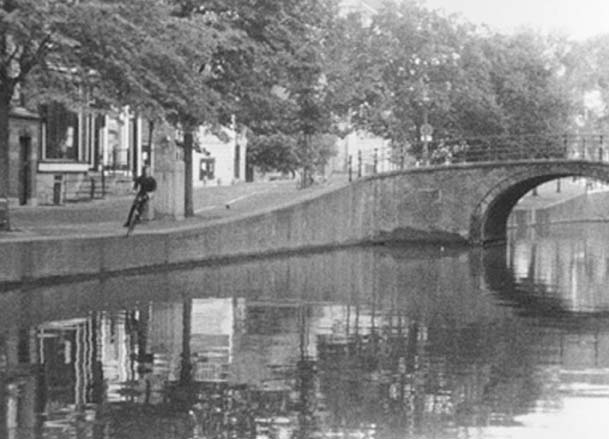
Galerie Les filles du calvaire 17, rue des Filles-du-Calvaire 75003 Paris France
Le Romantisme est-il mort? On constate dans l’art contemporain et conceptuel la persistance d’une certaine forme de Romantisme. Cette persistance ne viendrait elle pas justement du fondement intrinsèque de l’être, dont la dualité entre raison et émotion serait génératrice de mélancolie ? La négation et le reniement de cette inclination naturelle au romantisme, n’auraient ils pas réactualisé son sens et son existence ?
Historiquement le Romantisme s’est affirmé comme une critique rhétorique d’une idéologie basée sur la logique et les contraintes matérielles au XIXème siècle, époque de l’industrialisation et de la naissance de la société de masse. Il s’agissait de laisser libre cours au pouvoir spontané de l’émotion contre le rationalisme dominant de la période des Lumières à laquelle le mouvement politique et littéraire allemand de la deuxième moitié du XVIIIème siècle « Sturm und Drang » (tempête et passion)- précurseur du Romantisme - s’était déjà opposé (..)
Bien plus tard, l’art minimal et conceptuel ont réagi contre les discours mystiques et soi-disant prétentieux des expressionnistes abstraits prônant un certain lyrisme et la force émotionnelle de la spontanéité du geste pour n’en citer que quelques aspects.
Est née alors, l’idée que l’art devait être totalement pur et détaché de tout affect.
En 1967, Sol LeWitt écrivait : It is the objective of the artist who is concerned with Conceptual art to make his work mentally interesting to the Spectator, and therefore usually he would want it to become emotionally dry..() The expectation of an emotional kick, to which one conditioned to Expressionist art is accustomed (…) would deter the viewer from perceiving this art ». Mais comme le souligne Jorg Heiser * , pourquoi le spectateur ne pourrait-il pas penser d’une oeuvre qu’elle est mentalement intéressante et qu’il puisse être émotionnellement touchée par elle ? D’ailleurs, deux ans plus tard en 1969, LeWitt publiait un nouveau pamphlet où il écrit : Conceptual artists are mystics rather that rationalists » « they leap to conclusion than logic cannot reach ».**
Le propos de cette exposition s’est développé en s’appuyant autour de l’œuvre de Bas Jan Ader (1942-1975) aujourd’hui reconnu comme une figure clé de ces deux tendances a priori antinomiques : Romantique et Conceptuelle.
Bas Jan Ader a étudié en Californie du Sud à la fin des années 60 au moment où la pratique minimaliste et conceptuelle tendait à éliminer tout culte de la personnalité dans l’œuvre en faveur d’une approche plus objective et scientifique. Il a disparu mystérieusement en 1975, lors d’une traversée de l’Atlantique dans un petit bateau à moteur, un périple qui correspondait à la 2ème pièce d’un triptyque intitulé « In Search of the Miraculous ».
Alors que Bas Jan Ader adopte dans sa méthode l’orthodoxie des conceptuels dans laquelle on retrouve un systématisme d’approche dans le traitement de ses pièces (films, photographies, dia projection et installations formellement très purs), on retrouve dans ses sujets des références, quelquefois très banales, engageant une sentimentalité romantique : fleurs, larmes, coucher de soleil etc.. Bas Jan Ader était lui même sujet et objet de ses propres productions. Il est devenu maître dans l’affrontement de l’art aux lois physiques de la gravité.
De nombreuses pièces sont basées sur le simple acte de tomber. Dans Fall 1 (is the fall off the roof), 1970 l’artiste est assis en équilibre sur une chaise placée sur le toit d’un bungalow et se laisse tomber.(...) Malgré le ton humoristique qui pourrait caractériser ces pièces, l’acte de tomber engage un sens beaucoup plus existentiel et dramatique, voir autodestructeur. Avec sa dernière pièce In Search of the Miraculous 1975, la notion de chute a atteint son paroxysme et nous sommes forcés d’imaginer cet homme, seul face à l’immensité de l’océan se laissant aller aux aléas des caprices d’une mer incontrôlable, accomplissant le dernier saut.(...)
L’exposition met en avant différents aspects de la relation paradoxale présente dans l’œuvre de Bas Jan Ader entre Ratio et Pathos, Mental et Emotion, Humour et Drame…
(Lilou Vidal, extraits du Communiqué de presse)
* Jorg Heiser, catalogue Romantic Conceptualism, p136-137. Avec cette exposition qui a eu lieu à La Kunsthalle de Nürnberg, Jorg Heiser a créé une nouvelle appellation : « Romantic Conceptualism »
** Sol LeWitt « Sentence on Conceptual Art », Publication de Art and Language 1969
This project was born from an observation, the doggedness of a certain form of Romanticism (in its melancholic acceptance) in the contemporary and conceptual art of today. But doesn’t this doggedness come from the intrinsic foundation of our being, whose duality between reason and emotion creates melancholy? Have not the negation and denial of this natural inclination towards romanticism revitalised its very sense and existence?
Historically, Romanticism has been asserted as a rhetorical critic of an ideology based on the logic and material constraints of the period of industrialisation and beginning of mass society of the 19th century. It was a question of giving free rein to the spontaneous power of emotion versus the rationalism that dominated the period of Enlightenment to which the German political and literary movement of the second half of the 18th century – “Sturm und Drang”, the forerunner of Romanticism – was already opposed.
The definition of Romanticism proposed by Baudelaire in his text The Salon of 1846 covers the main basic principles: emotions, individualism, interiority, infinite, a fusion with nature becoming a reflection of the soul.
Much later, minimal and conceptual art reacted against the mythical and so-called pretentious speech of the abstract expressionists, extolling a certain lyricism and the emotional strength of the spontaneity of the gesture, to mention but a few aspects.
That is when the ideas was born that art must be totally pure and detached from any affectation.
When Sol LeWitt wrote in Paragraphs on Conceptual Art in 1967:“It is the objective of the artist who is concerned with Conceptual art to make his work mentally interesting to the Spectator, and therefore usually he would want it to become emotionally dry..() The expectation of an emotional kick, to which one conditioned to Expressionist art is accustomed (…) would deter the viewer from perceiving this art”.
But as Jorg Heiser * emphasises, why would a spectator not think that a work is mentally interesting and that he can be emotionally affected by it?
In fact, it was two years later, in 1969, that LeWitt published a new pamphlet in his Sentence on Conceptual Art in the first issue of Art and Language, when he wrote: “Conceptual artists are mystics rather that rationalists” and “They leap to conclusions than logic cannot reach”.**
The idea behind this was developed borrowing from the work of exposition Bas Jan Ader (1942-1975), who today is recognised as the key figure that incarnates these two tendencies that are diametrically opposed: Romantic and Conceptual.
Disappearing in mysterious circumstances in 1975 while crossing the Atlantic in a small motor boat – a voyage that corresponds with the 2nd part of a triptych that he had called “In Search of the Miraculous” – Bas Jan Ader studied in southern California at the end of the 1960s at a time when minimalism and conceptualism tended to eliminate any personality cult in the work in favour of a more objective and scientific approach.
Whereas in his methods Bas Jan Ader adopts the orthodoxy of concepts that feature a systematic approach in the treatment of his work (films, photographs, slide projections and installations that are very pure in form), his subjects include references, sometimes very banal, that engage a romantic sentimentality: flowers, tears, sunsets, etc. Bas Jan Ader was himself both the subject and object of his own productions.
He became a master of confronting art with the physical laws of gravity. Many of his pieces are based on the simple act of falling. In Fall 1 (Los Angeles) 1970, the artist is sitting balanced on a chair placed on the roof of a bungalow and lets himself fall. In Fall II, Amsterdam, 1970, he hurls himself headlong on a bicycle into a canal. Despite the humorous tone to be seen in pieces such as his videos, the act of falling engages a sense that is much more existential and dramatic, even self-destructive. With his final work, In Search of the Miraculous 1975, the notion of falling reached its paroxysm, we are forced to imagine this man, alone in the face of the immense ocean, allowing himself to be driven by the whims of an uncontrollable sea before making this final leap.
The exhibition will present various aspects of this paradoxical relationship to be found in the work of Bas Jan Ader between Ratio and Pathos, Mental and Emotion, Humour and Drama.
(Lilou Vidal, Extract of the Press Release)
*Jorg Heiser, Romantic Conceptualism, pp 136-137. Jorg Heiser through this exhibition that took place in the Kunsthalle at Nuremberg created a new name: “Romantic Conceptualism” (also known as conceptual romanticism) is a strand of conceptual art
** Sol LeWitt « Sentence on Conceptual Art », Publication de Art and Language 1969


